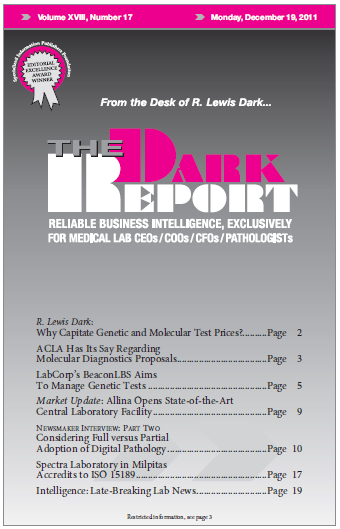CEO SUMMARY: Digital pathology is considered to be one of the more disruptive technologies now finding acceptance in anatomic pathology. Since founding Aperio Technologies, Inc., of Vista, California, in 1999, President Dirk G. Soenksen, M.S., M.B.A., has been in the forefront of this important trend. In part one of this two-part interview, Soenksen discussed the […]
To access this post, you must purchase The Dark Report.


